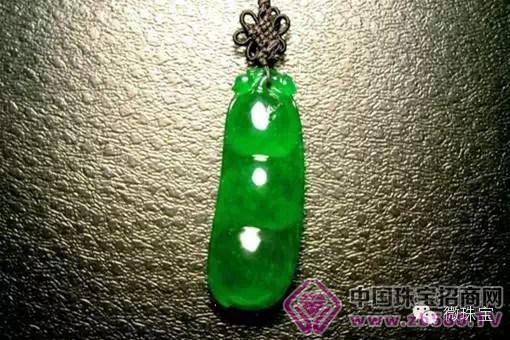The transparency of jade is commonly known as “water head†and is one of the important conditions for evaluating the value of jadeite. What kind of factors affect the transparency of jadeite? First, the impact of structure on the transparency of jade Structure refers to the degree of crystallization of the minerals that make up the rock and is one of the main factors affecting the transparency of jadeite. It refers to the particle size of jadeite, the uniformity of particle size and the crystalline form of jadeite. The jadeite mineral has fine and uniform particle size and high transparency, otherwise it is low; the finer the particle size, the closer to the parallel crystal structure, the better the transparency. Second, the impact of the structure on the transparency of jade The jadeite minerals are evenly distributed and the particle size distribution is uniform and transparent. There is fissure development and there is a later mineral filling, which affects the transparency of jadeite. Third, the influence of impurity elements and inclusions on the transparency of jadeite Trace elements in the jade, such as iron, manganese, chromium and metal mineral inclusions, have a great impact on the transparency of jadeite. Fourth, the impact of impurity minerals on the transparency of jadeite The simpler and cleaner the jadeite composition that makes up the jadeite, the higher the transparency. When it contains more non-hard jade minerals, such as amphibole, zeolite, omphacite and other minerals, the transparency is poor. Fifth, the impact of color on the transparency of jade The darker the color, the worse the transparency, which is determined by the color. The electronic transitions of different energy levels in the crystal field can produce different colors, and the number of electrons participating in the same energy level transition determines the depth of the color. The more electrons participating in the same energy level transition, the greater the energy consumption of the incident light, the darker the color of the jade, and the lower the relative transparency. 6. Influence of thickness on the transparency of jadeite The same jadeite has different transparency due to the difference in thickness. The greater the thickness, the worse the transparency. This is because as the thickness increases, the route of light crossing in the jade becomes longer, the absorption of light by the jade is increased, and the light energy consumption of the incident light is too large, which reduces the transparency of the jade. The thickness of jadeite is generally greater than 6mm, so it has the ability to resist crushing. Therefore, when the thickness of jade jewelry reaches 6mm, transparency is particularly important.
Topline is professional alpaca yarn and alpaca Wool Yarn manufacturer in China and we chooose high quality alpaca wool fibre. Alpaca fibre is warmer and stronger than
wool, and so resistant to saturation that it`s nearly water-repellant. It`s
also free of the lanolin that is present in wool, making it hypoallergenic. Lighter
shades of the fleece also take dyes beautifully, making it invaluable to our
designers when they want to bring a vibrant sweater design to life.
There are countless reasons why alpaca
fibre is so precious and useful. Consinee Group – Top Line promotes a series
alpaca yarn in 19AW collection. They are in brush or boucle style and can be
designed into beautiful sweater or coat.
Let`s have a review of the alpaca yarn.
1. BIBI: Nm 4.5 42% superfine
alpaca 42% extrafine merino wool 14%polyamide 2% elastan- brush style 3G
2. ASPEN: Nm13 32% superfine
alpaca 32%extrafine merino wool 30% polyamide 6% elastan Brush style- 5/7GG
3. ALPHA: Nm20 33%superfine alpaca
32% superfine merino wool 35% polyamide Brush style- 12gg
4. ANIKA: Nm13 27%superfine alpaca 28% wool 45%polyamide
Alpaca Yarn,Baby Alpaca Yarn,Alpaca Wool Yarn,Alpaca Blend Yarn Consinee Group Go., Ltd. , https://www.consineeyarn.com
August 23, 2021